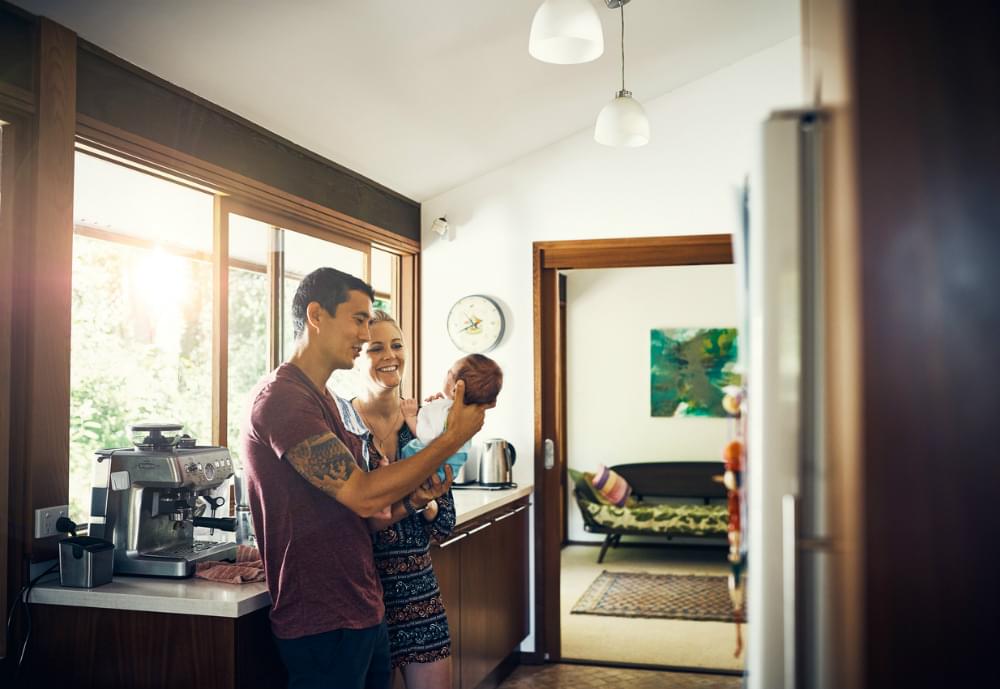Australian property market update - October 2019
Our Australian property market update for October is already upon us, where we dig into the data and track the performance of national property values, and housing conditions in all our states, capital cities and regional markets. We also look at other critical data like rental listings and rates, and what it could mean for you.
If you recall our September property market update, the overall trend was positive, though largely driven by gains in our two largest markets - Sydney and Melbourne. Data from property analysts CoreLogic also confirm that June 2019 was the floor of the current slump, with national dwelling values up 2.9% since then. Currently, the overall market is still down -5.7% from its peak in October 2017.
With this in mind, let's take a closer look and see what has changed, starting with national property values for the month of October.
National property values: October 2019

Houses
$541,283
Monthly change: +1.2%
Units
$500,163
Monthly change: +1.2%
Crunch the numbers from our monthly update and national property values are up +1.2% for the month of October - the fourth straight month the housing market has risen. This is still centered on the Melbourne and Sydney markets, but other capital cities are also getting in on the action, with the combined capitals up +1.4% for October and +3.6% for the quarter. CoreLogic puts this down to lower mortgage rates and improved credit availability, together with more robust buyer demand.
The best performing capital city is Melbourne, up a respectable +5.5% for the quarter, while Perth still underperforming down -1.7% over the same timeframe. Regional markets are also positive overall, up +0.4% for the month of October and +0.5% for the quarter.
Market update: Sydney and regional NSW
Houses
$918,314
Monthly change: +1.8%
Units
$720,658
Monthly change: +1.2%
Sydney property values grew +1.7% over October to +5.0% for the quarter for a median dwelling value of $817,886. Houses are currently outperforming units - +1.8% vs +1.2% - reflecting continued buyer wariness of new apartment developments.
In terms of individual performance, Baulkham Hills and Hawkesbury are the standouts, both up +1.1% annually. Areas that are still struggling include the Central Coast (-8%) and the Inner South West (-5.6%).
In regional markets the Riverina continues to grow (+1.7%) while previous growth leader Shoalhaven is still negative (-6.1%), as is Newcastle (-4.3%).
Read: Sydney's Northern Beaches hit clearance rates of above 80%
Market update: Melbourne and regional VIC
Houses
$751,513
Monthly change: +2.4%
Units
$558,254
Monthly change: +2.0%
Melbourne is the top performing capital city, having overtaken Sydney, where dwelling values have advanced +2.3% over October for a median value of $650,197. This is $167,689 less than the median value for property in Sydney, and surely a factor in the city's continued growth and attractiveness for homebuyers and investors alike.
Melbourne's Inner suburbs (+2.8%) and Inner East (+3.1%) are leading the charge over the twelve months to October, while the Mornington Peninsula continues to struggle down -6.6.%.
Regional markets growing include Bendigo (+1.9%) and Warrnambool (+4.0), which continue to outperform most capital cities. Overall regional markets in Victoria are up +0.2% in October for a median dwelling value of $362,268.
Market update: Brisbane and regional QLD
Houses
$539,167
Monthly change: +0.9%
Units
$379,321
Monthly change: +0.8%
Brisbane property prices are up +0.8% over October and +1.1% for the quarter - the highest quarterly growth since December 2015, though still down -1.3% from the market peak. If you are thinking of investing in Brissie, the median house price is currently $539,167, while units are at $379,321.
The best performing market in the state is the Mackay/Isaac/Whitsunday area, which has grown +4.4% for the year to the end of October. Outback Queensland is still feeling the pain, and is likely to for some time - down -31.2% for the year to date, though overall regional markets grew +0.5% for a median value of $369,469.
Read: Brisbane's gentrification: Where to invest for solid long term growth
Market update: Hobart and regional TAS
Houses
$492,465
Monthly change: +0.9%
Units
$378,846
Monthly change: +1.0%
Hobart is surprisingly up +0.9% over the month, after posting a loss in September. This brings it to +1.0% for the quarter and +2.6% for the year to date. The quarterly rise is the largest three month rise in dwelling values since March 2019.
Launceston and the North East of the state are leading the current rise in values, having grown +4.7% in the year to the end of October. The median house price in Hobart is currently $492,465, while units are at $378,846.
Market update: Canberra and the ACT
Houses
$671,968
Monthly change: +0.8%
Units
$429,728
Monthly change: +0.1%
The Canberra market is up +0.6% for October and +2.4% for the quarter - the largest three month rise in values since May 2017. As we indicated in the September market update, consistent demand is a key driver in the nation's capital, where the median dwelling value is $601,487.
Market update: Adelaide and regional SA
Houses
$468,757
Monthly change: +0.5%
Units
$317,763
Monthly change: -0.4%
Adelaide dwelling values rose +0.1% in the three months leading up to October, the strongest quarter since December 2018. According to CoreLogic, the median house price now stands at $468,757, while units are at a median of $317,763.
Overall this market is relatively stable compared to other capital cities, down just -0.9% for the year to date. The state's South East that's up +2.3% for the year to date is the leading growth area, while regional markets are down -0.4% for the month, but are up +0.8% for the year to date.
Read: Top 10 growth suburbs in Australia right now
Market update: Perth and regional WA
Houses
$451,815
Monthly change: -0.4%
Units
$346,367
Monthly change: -0.8%
Perth is the only capital city that recorded negative growth (-0.4%) for the month, and is also down -1.7% for the quarter for a median dwelling value of $435,119. This is the lowest median house value of any capital city. There is however hope as the rate of decline is slowing, with the quarterly trend the smallest decline in over a year.
Inner Perth is leading the race to the bottom, having dropped -10.7% in the year to date, while the Wheatbelt (-15.8%) and Outback (-20.3%) appear to be on a never-ending downward spiral. This is the case for many farming communities in regional markets where the drought is having a negative impact on all areas of economic activity.
Market update: Darwin and regional NT
Houses
$468,317
Monthly change: +0.7%
Units
$293,098
Monthly change: -0.4%
Darwin dwelling values rose +0.3% in October, but together with Perth, is the only state capital where values fell over the quarter, down -1.2%. Its median property value of $394,132 makes it the most affordable city to buy property, which has seen first time buyers taking full advantage of houses with a median value of just $468,317.
Read: Tracking the 2019 Spring selling season: How is it doing?
Rental market: Rates and yields
Rental markets are still largely flat, with rates falling across most capital cities for the quarter.
Locations feeling the pinch include Darwin, where rents are -1% lower, and Sydney where rents are down -0.7%. Brisbane (+0.2%) and Adelaide (+0.3%) buck the trend with rises in rates for those markets. If you are looking for the market with the highest rental yield, this is currently Darwin (5.8%), while Sydney takes the prize for the lowest yields (3.2%). This is largely down to a rise in supply, particularly from large scale unit developments which have come onstream
What does all this mean and what can we expect?
If you had to summarise where we are now in terms of property market performance, the overriding theme is improving conditions for most markets.
October is the fourth straight month of rising national dwelling values, and it is also the largest month-on-month gain in overall property values since May 2015. CoreLogic Research Director Tim Lawless identified three clear drivers for the current rise in demand for housing, specifically:
- Low mortgage rates
- Improved access to credit
- Stamp duty exemptions for first home buyers
On the downside total advertised stock levels - otherwise known as supply - are still a concern, and are at the lowest level since 2010. Consumer sentiment around the state of the economy also remains shaky, which means we shouldn't take the current rise in dwelling values for granted.
Read more: National property market forecast 2020








